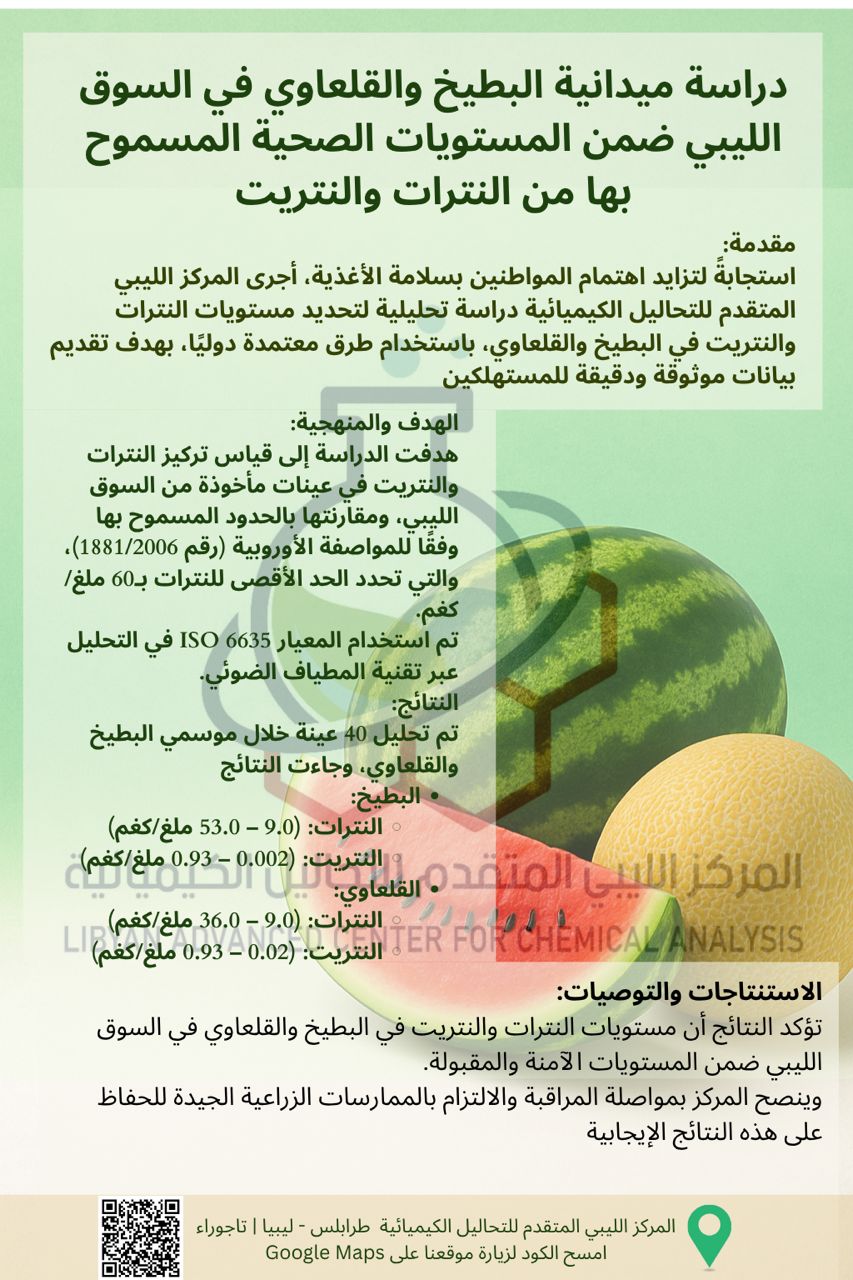
A Brief Report on the Results of a Recent Study Conducted by the Libyan Advanced Center for Chemical Analysis on Nitrate and Nitrite Levels in Watermelon and Cantaloupe Introduction: This study was conducted in response to the growing public concern regarding the presence of nitrates and nitrites in fruits and vegetables particularly watermelon and cantaloupe The aim was to provide accurate and scientific information on the subject. A dedicated research team was assigned to carry out the study using internationally recognized methods Objective and Methodology: The study aimed to assess nitrate and nitrite levels in samples of watermelon and cantaloupe collected from the Libyan market. The results were compared to the European Regulation No. (1881/2006), which sets the maximum allowable level at 60 mg/kg, as there are currently no Libyan standards for these compounds Analyses were performed using internationally approved methods, in accordance with ISO 6635 — the standard for determining nitrate content in fruits and vegetables using spectrophotometric techniques Results: Approximately 40 samples of watermelon and cantaloupe were analyzed during the watermelon season over a two-month period The findings showed relatively low levels of nitrates and nitrites in all samples: • Watermelon: Nitrate levels: 9.0–53.0 mg/kg Nitrite levels: 0.002–0.93 mg/kg • Cantaloupe: Nitrate levels: 9.0–36.0 mg/kg Nitrite levels: 0.02–0.93 mg/kg All measured values were below the maximum limits specified by the European regulation Conclusions and Recommendations: The study indicates that the nitrate and nitrite levels in watermelon and cantaloupe sold in the Libyan market are within acceptable and safe limits It is recommended that farmers continue to monitor and maintain these low levels to ensure public safety Acknowledgments: The Center’s management extends its sincere thanks to Ms. Mahasen Al-Khabat Head of the Laboratory and Analysis Department for her direct supervision of the study research and investigation into standardized testing methods Special thanks are also extended to engineers Hanan Al-Mahdi and Dareen Al-Trabelsi who played a major role in the final stages of the analysis process and to Mr Mohamed Arhouma who contributed significantly to the proper collection of samples Appreciation is also due to engineers Zeinab Al-Kamoushi and Huda Al-Jilani for their key efforts in sample preparation dissolution and extraction procedures Our thanks as well to photographer Hassan Bin Abdullah who accompanied the team throughout the process This work affirms the Center’s commitment to its scientific responsibilities despite challenges posed by the limited availability of equipment and training which often hinder the ambitious efforts of the management and staff From this platform, we once again call for support in addressing the Center’s needs a step that would undoubtedly lead to a qualitative leap forward and significantly contribute to the service of this country through this vital research institution

